Gain Confidence In Influencer Marketing: Understanding Organic or Paid
by Cydney Hatch • November 14, 2019
As a business, you don’t need to be investing your marketing budget into the likeliness of Kardashians to make influencer marketing work. Believe it or not, a new generation of influencers and “micro-influencers” are proving that the trend is here to stay and people who used to be enticed by TV and roadside ads, now follow influencers that affect their purchasing behaviors.
With people fighting back the influx of digital advertising, claiming it is irrelevant to their interests online, and seeing a rise in ad blockers, influencer marketing is a major way brands are trying to earn back trust and customer engagement without intruding online. A
s social media expands its dominance into our lives, the people who can sway the online conversation will be the people to look out for…so what is your business doing when it comes to influencer marketing?
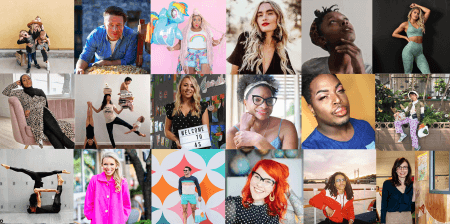
Whether you are new to this type of marketing, or you are doubling down on your paid efforts, this article will help you navigate the options influencer marketing has and the benefits you can see if you do it correctly.
Let’s get influencing and see what type of influencer marketing is a fit for your business!
Why Influencer Marketing and Why Is It Successful?
In simplicity, marketing is all about building social communities and trustworthy relationships with your customers and target audience. The problem is, as marketing has evolved into the digital and social age, businesses alike are struggling to build meaningful relationships online, let alone ones with younger generations.
Want to know the key to modern marketing? Follow the content trail!
Social media is all about creating niche, quality and visually appealing content—at least the good stuff is—and sharing it around a hobby, skillset, or interest. It is then marketing your accounts to fit the people also interested in those things so they find content they are inspired by and can enjoy.
For example, if you are a person who loves interesting foods and fine dining experiences, you are probably following accounts who post new upcoming places to eat, recipes, etc, right?
Well, that is why influencer marketing works!
Influencer marketing is all about creating content trails people will find and follow religiously because you speak to their interests and they trust your opinion as an online “guru” if you will. There is also a personal connection element successful influencers create so you feel safe, informed and inspired.
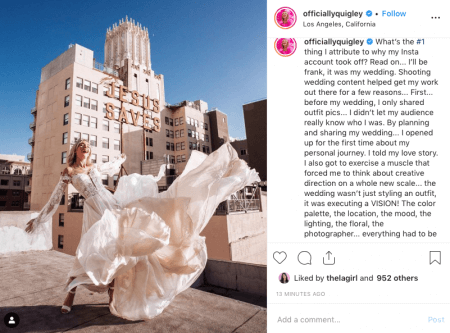
Going back to the fine dining example, Instagram Influencer Ashley from Baker By Nature, has created a career around her baking passions with over 324k followers who are actively engaged with her content. Not only does she share baking tips, recipes and cute baking apparel, she allows followers to join her on her wedding planning journey as well!
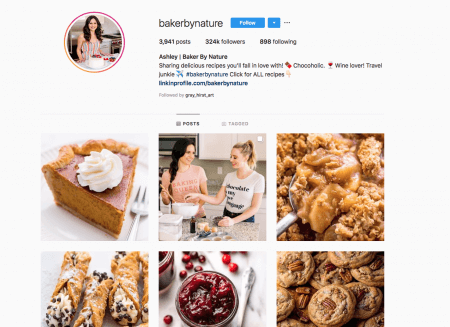
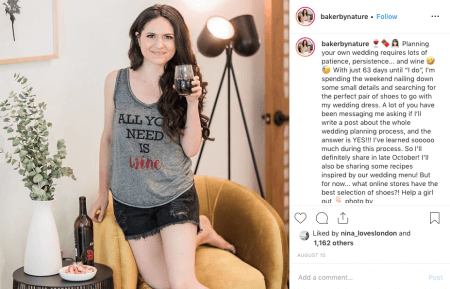
As the follower, you feel like you have a relationship with Ashley as she invites you into her personal life, kitchen and personal recipe box. You also trust her because she always has stunning recipe photos, hundreds of likes, collaborations with companies and a lot of engagement—so she must be legit, right?
Well, just like this example, we all fall victim to the influences of an influencer. Whether it was buying the cute top we saw them wearing, trying the supplements they use when they workout, etc, influencer marketing works! A lot of people think that Instagram marketing is just a “fad”, but that isn’t the case, especially with the emergence of purchasing posts and ecommerce upgrades.
In reality, Instagram has an average of about 500 million active users a day, and the number just keeps growing. Instagram is crowded with influencers eager to promote your product and for the most part, it works…if done correctly and intentionally.
To best understand how you can use influencer marketing to the best of your businesses’ ability, let’s look at some of the options and details you should know to prove true success and value from influencers.
Types of Influencers and How to Choose Who to Work With
Now, before you throw money at people to promote your business, be sure you have a proper plan in place. When thinking about influencer marketing, you need to consider three key steps:
- Influencer Identification: Finding the right people to speak to your audience
- Meaningful Content & Distribution: Creating meaningful content your audience wants, not just a sale ask
- Performance: Understanding ROI and social sales influencers drive
Throughout this process, you’ll need to know your audience, set clear goals, and define how you’ll measure success! An “ideal influencer” for your business will be one that matches your brand’s tone, style, and mission. You are not just paying someone to say “buy this”—you want someone who can create meaningful content around your business and its objectives.
A common mistake businesses make with their influencer marketing is being too obvious. For instance, an influencer takes a photo with your product or service and writes a generic caption saying “check ’em out.”
The key to great influencer marketing is creating meaningful content for your audience that does not seem like a sales ask. Content is the compelling part of your influencer marketing partnership that gets people to trust your business and buy from you.
As content matters, you need to understand the type of content your audience jives with and what platform promotes it. As that is crucial, you will need to understand the different types of influencers you can choose from! Below are some of the most popular kinds of influencers you will find and need to consider working with, depending on the type of business you are and the audience you have:
Instagram and Social Media Influencers
A lot of brands automatically associate influencer marketing with Instagram and rightfully so! In fact, one survey found that Instagram was the No. 1 platform for 92% of influencers in 2017.
Instagram and social media influencers are probably the most successful and popular due to people spending most of their leisure time online browsing Instagram and Facebook. Typically, this content focuses on quality photography and video content that inspires people to stop scrolling.
For example, you can find hilarious influencers like The Fat Jewish, who has 11.1 million followers, selling jerky through video ads or something a little more tame as The House Lars Built which features artful ideas for living and making:
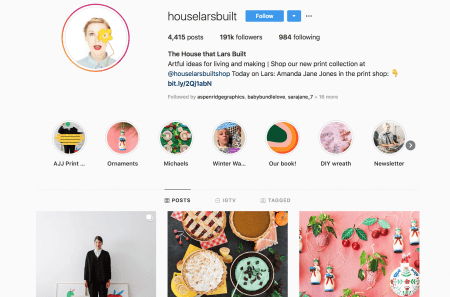
In both cases, these influencers have maxed out their branding and have carved out a place for themselves in the digital space as an authority. Through social engagement, quality content, and personal connection pieces they truly are the connection between businesses and people.
YouTube Influencers
YouTube is the go-to website for video content so if your audience loves video content, this might be the influencer type you want to dabble with. YouTuber Influencers are not only omnipresent across the network but are well known by today’s millennial customers.
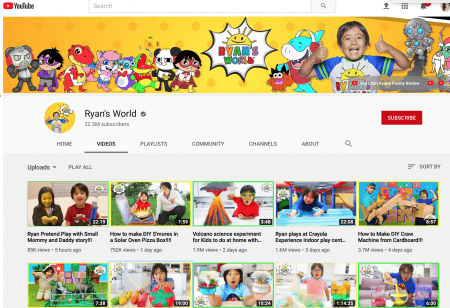
For example, Ryan Toys Review built up his following reviewing toys beginning in 2015 and has since branched out with a line of toys sold in Walmart and Target. His most popular video has over 1.6 billion views and he made $22 million last year through his channel reviewing toys! TOYSSS!
Like Ryan’s Toys, top Youtube Influencers review products, present DIYs and provide insights for popular video games, give life advice, and more.
Snapchat Influencers
Snapchat is one of the more interesting social networks on this list, simply because it’s not nearly as easy for users to follow influencers in comparison.
The content is essentially “stories” that are told in real-time throughout the day. For these reasons, the network has developed somewhat of a cult following. With Snapchat’s “Stories” channel attracting over $1 billion dollars at its peak times it’s understandable why brands are taking notice of this social network.
A success story for Snapchat is Frankie Greek, who is a New York-based “Snapchat journalist” who specializes in hosting Snapchat Takeovers and developing Snapchat marketing strategies for brands/media companies like Fuse, Thrillist, Fox, and others.
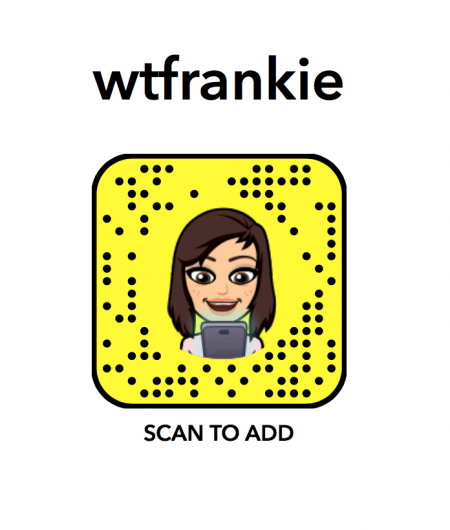
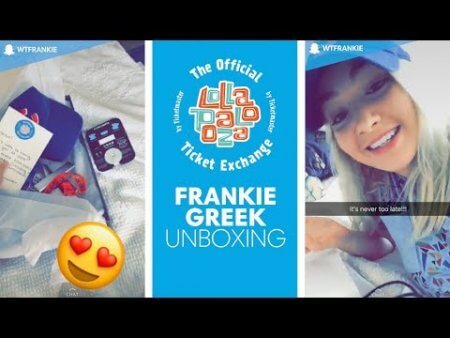
Equipped with a background in both radio and television, Greek is an engaging storyteller who uses Snapchat’s short-form videos to her advantage.
Like her, as this platform is less used by brands, there is a gold mine of opportunity for those looking to find younger customers and to try new marketing strategies.
Blog and Vlog Influencers
Bloggers and vloggers are people who are dedicated content creators who create posts consistently, almost daily. They are also usually active on various social media platforms where they promote their content. Popular bloggers usually have a highly engaged and loyal audience that looks forward to their next posts.
For example, The Bucket List Family is just your “average” family working from all around the world as Family Travel Journalists! Their story began in 2015 when they decided to sell everything and leave home for a journey around the world together. They have their own branded stuff but have partnered with numerous brands and locations to promote and share with followers!
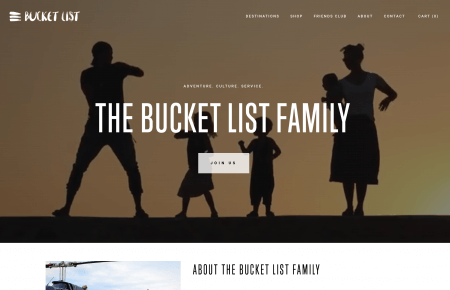
Like them, collaborating with bloggers and vloggers is usually a highly effective way of renewing your content strategy. It is also an effective way to boost brand awareness and generate leads for your business.
Micro-Influencers
As most of the influencers above have thousands to millions of followers, there is also a benefit in focusing on the smaller scale of influence. Sure, large numbers mean massive exposure but high engagement levels are just as important. This is where micro-influencers come into the pictures.
Micro-influencers usually have a few thousand or an even a smaller number of followers. However, they have extremely engaged communities within their niche. Because of this, they are more likely to be able to motivate their followers to take the desired action.
In fact, 81% of the active Instagram influencers have less than 100,000 followers so if you are a brand just starting your influencer marketing budget there is good news: micro-influencers tend to be smaller fees and are open to other forms of compensation including giveaways and shoutouts. Thus, if you don’t have sufficient funds for an influencer marketing campaign, micro-influencers can be your solution!
Activists
We live in a world where people want to not only purchase items, but they want to give back and make a difference. This is where social media activists come into play for businesses looking to partner with charities, causes and politics. As a business, you should be careful as to who you choose to collaborate with as many of these types of influencers swing to extreme ideologies to voice opinions etc.
For example, influencer Jennifer Nini uses her social influences to bring to light issues of sustainability, ethical fashion, and body positivity.
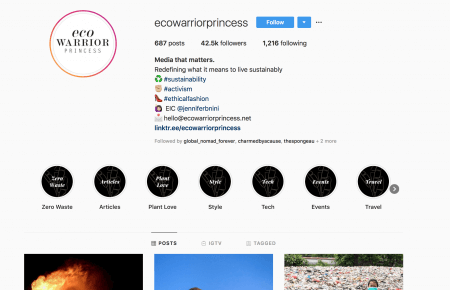
In one of her posts, she collaborates with @MatterPrints to highlight their new sustainable textile and clothing brand.
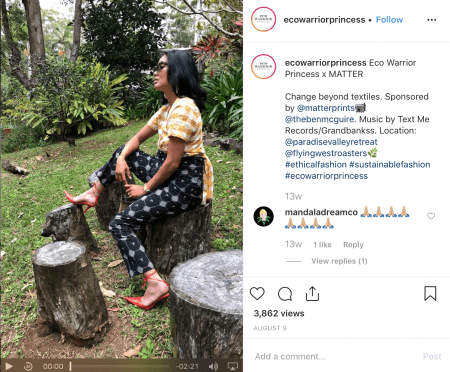
Like her, you can promote your business as a company that supports a cause or align yourself easily with one to better expose the brand mission you have, etc.
Journalists
Piggybacking off of activists, journalists have a strong influence on your target audience. As most journalists have influence beyond just their pad and pen and have a cult following on social media they can really promote a brand for better or worse!
For example, Sage Lazzaro, wrote an article about Uber amongst the crisis they were having with women’s safety and having poor workplace culture surrounding female associates.
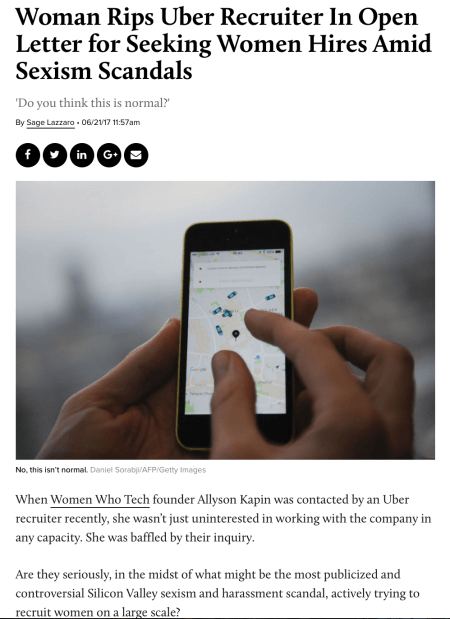
As people are driven by social posts and articles, journalists can play a strong role in the information people are getting about your brand. If you are a restaurant owner who had Joe Yonan reviewed your restaurant and shared it on social media, you will probably see an influx of attendees knocking your door.
As journalists are not typically seen as influencers in the “typical” sense, they still have a lot of ways to influence in the social space.
Paid and Organic Influencer Marketing: What’s The Difference?
Once you have an idea of what different types of influencers and platforms are out there, you have to decide between paid or organic marketing. In order to understand the best practices we will discuss later, you need to first understand how each type of influencer marketing works, the value it brings and the ethical requirements involved.
Organic Influencer Marketing
Organic influencer marketing is connecting with influencers in an unpaid, unbiased, and authentic way. Organic influencers are trying to provide valuable content people can enjoy with loose marketing sales attachments.
The best example of organic influencer marketing is when an influencer just genuinely enjoys a brand and wants to promote it, no strings attached. Danielle of Blonde in the District does this with PULSE House Fitness beautifully:
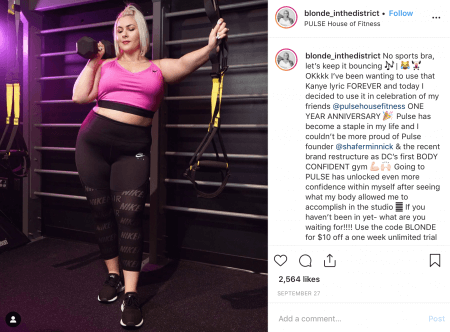
Like this example, these posts typically have higher engagement rates, are cost-effective for brands, and have an authentic “word of mouth” nature to them. It is clear to audiences that the blogger uses the brand’s products in her everyday life and recommends it highly.
Paid Influencers
If a brand is interested in putting a human face to the brand, reach niche audiences, or spread awareness, then paying an influencer may be the best fit. It’s good to keep in mind that paying for paid partnerships can range anywhere from a few hundred dollars to a few thousand, so it’s best to put UTM codes and other parameters behind your marketing budget.
Going back to Blonde in the District, she posts a paid partnership with Zipcar where she promotes the travel solution to D.C city dwellers who don’t typically have cars but need travel solutions:
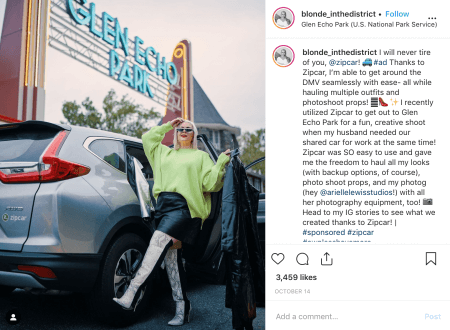
While paid seems easy enough, in recent years the FTC has really cranked down on transparency rules.
The lines between organic and paid content have been more blurred, so, the Federal Trade Commission (FTC) implemented Endorsement Guides that brands must abide by so consumers can clearly identify whether or not they’re viewing a sponsored/paid post:
“The Guides, at their core, reflect the basic truth-in-advertising principle that endorsements must be honest and not misleading. An endorsement must reflect the honest opinion of the endorser and can’t be used to make a claim that the product’s marketer couldn’t legally make.” – FTC
If a brand decides to create a paid partnership with an influencer, in proximity to the caption copy influencers must include:
- #AD, #Sponsored, or #(BrandName) Partner
- Place the disclosure with each & every message
- Feature the disclosure visually and spoken for video content
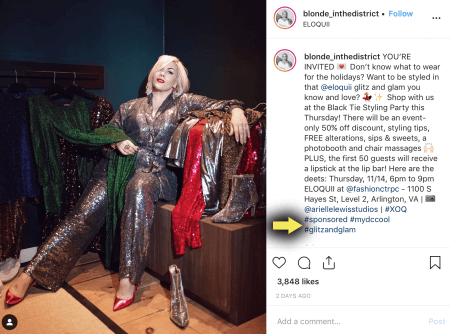
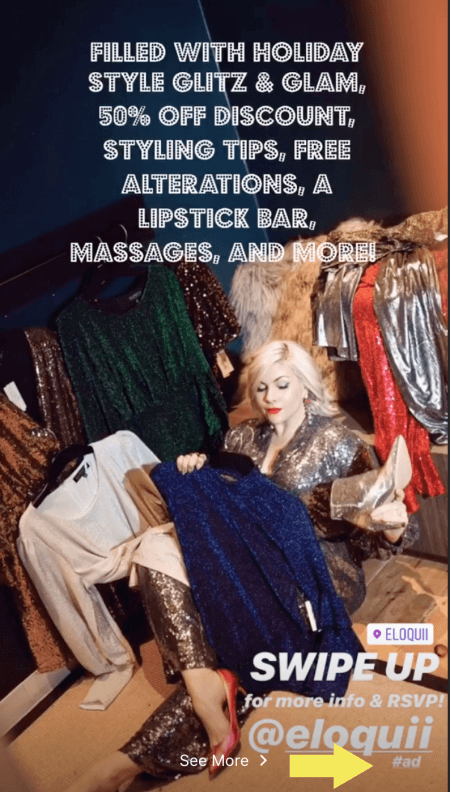
By being transparent with consumers, trust is built for the brand and influencer, leading to a more meaningful content relationship. By understanding key differences between paid and organic, a business brand can maximize brand awareness and connect with target audiences in exciting ways.
Let’s look at ways you can do that in the next section!
Influencer Marketing in 2020 and Beyond: Tips and Tricks
Now that you have a solid understanding of influencer marketing, let’s take a look at how you can make the most of your influencers in 2020 and beyond:
Beware of Posers
Too much of a good thing can be bad right? That includes influencers!
A growing amount of Instagram users are trying to become influencers due to the incredible attention and money that influencers can receive which results to some bad things, including the emergence of posers.

Unfortunately, in 2020, there will be an influx of fake sponsored content where users are trying to fool brands into thinking they have a large following base. From buying followers, sharing the #sponsored without being sponsored and so much more, it might be tough to figure out who is REAL and who is fake.
As marketing budget is special and should be reserved for the real McCoys of the business, the following tips should help you recognize fake influencers:
- Check Engagement: Take a look at their “likes” to “follows” ratio. You can look and see an account has a large number of followers, but a small amount of likes/comments
- Look at Individual Followers: Pull up their followers and look at the accounts. If fake, you will notice that their followers have very minimal activity on the page (no pictures, no posts, no followers). These are known as “dead accounts”
- Crappy Comments: Take a look at the comments by the followers on a post. Do they make absolutely no sense whatsoever to any language in the world? They are most likely bought comments
- Follower Checkers: There are tools out there, like Instacheck which will look up and let you know how many fan accounts are fake
- Quality Check: Go through their social accounts and content pieces to get an idea of the quality of work they can deliver. If things do not provide real engagement or value if you read it, it won’t for audiences either.
If you really see how their content engages with their niche audience and the value it provides beyond vanity metrics, you will be set!
Let Influencers Create
Celebrities are not the only ones having fun by launching their own lines within established brands! So are influencers!
Businesses of all types have begun capitalizing on the popularity of their influencer partners by offering them the chance to launch product lines of their own. As brands move away from the one-and-done method of influencer marketing, long-term influencer partnerships have given rise to product collaborations.
Amazon, for example, has seen a lot of success with this type of influencer marketing as they created SHOP THE DROP, limited-edition collections from global fashion influencers.
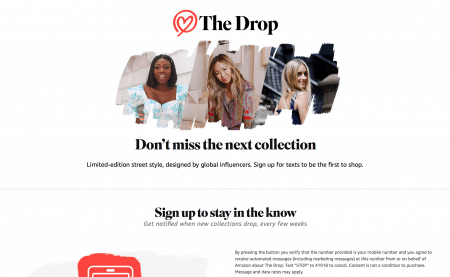
 Like Amazon, there is a significantly noticeable increase in these mutually-beneficial relationships where influencers are in the creative driver’s seat and get to own and endorse their own product and the brand gets to sell it and tap into their invaluable follower groups!
Like Amazon, there is a significantly noticeable increase in these mutually-beneficial relationships where influencers are in the creative driver’s seat and get to own and endorse their own product and the brand gets to sell it and tap into their invaluable follower groups!
Partner With Master Storytellers
Campaigns receive the most attention when influencers tell stories with products.
By telling products, I am not suggesting making things up for the sake of a story, I mean connecting with influencers who genuinely need your product, can connect with your brand mission, etc.
For example, if you own a mustache wax and beard business you would want to connect with a bearded god of a man who can share his experience with skin problems, grooming and upkeep…if you are a feminine sanitary brand promoting eco-friendly products, you want to connect with a woman who is connected in the female community and wants to promote eco-friendly options…if you are a winter accessories brand, have someone who shares the story of wearing scarves and mittens as child and bring feelings of nostalgia during the holiday rush!
By having a story behind a product, people feel a more authentic connection to the item itself and the solutions it might provide them as well.
Get Your TikTok and Twitch On
These two platforms are on the rise as major players in influencer marketing.
TikTok, a short video platform like Vine, has become a worldwide sensation over the last year being a go-to platform for Gen Z audiences. With that being said, marketers have taken to the platform for influencer opportunities like Gymshark who ran a successful campaign earlier this year. With its top performers collectively commanding a following of nearly half-a-billion users, we can expect brands to take a more vested interest as the platform continues to grow its user base.
Twitch, is also on the rise despite being typically known for gamers and streamers use. Despite that typical usage, there is significant growth in their partner programs that cannot be ignored! Several large non-gaming brands are making their presence felt on the platform which will allow for new opportunities and strategies.
Promote Promo Codes for Days
Who doesn’t love a sale?
Incentives are a great strategy to use with influencers as you can create specific promo codes for influencer followers to use! For example, Taza of the “Rockstar Diaries” frequently has ecommerce businesses approaching her to share promo codes with her followers.
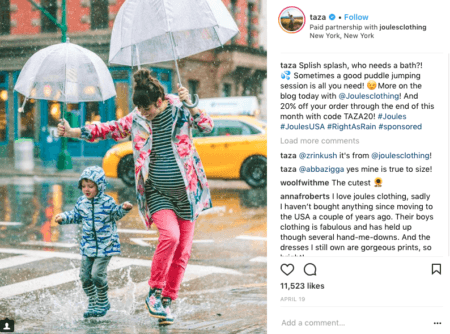
In the example above, she had a blog post (and social media posts) sharing her personal memory of dancing in the rain as a kid. She created an emotional connection to readers through her written word, but the photos of her and her son jumping in the rain are just adorable.
I mean, I want to buy these dang rain boots!



Through her content, she makes rain look adorable and fun. At the end of her post, Taza has promo codes and a thank you for Joules for sponsoring the post!
By tracking, you can truly gauge engagement and see if their efforts are worth your marketing budget. Some platforms to look at are:
Get Your Influencers Shoppable
Studies show that images are one of the most important components of social media posts, so you should expect high-quality imagery from your influencers. However, great imagery isn’t just about creating pretty photos.
Your content needs to have a purpose!
Instagram has a feature called Shopping Tags which allows users to tag specific products in their images—which is a great opportunity for paid influencer campaigns. To show you how this works, let’s take a look at a post by Dazey LA who has tagged the headband, shirt and earrings in her photo:
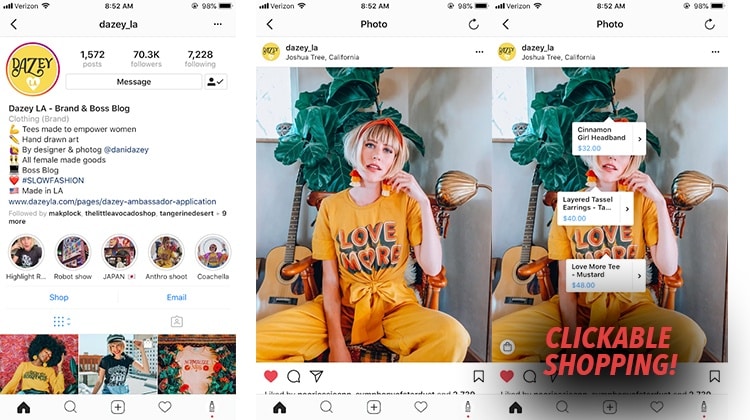
Users will see a “Tap to view products” notification in the bottom left of the image, which when tapped, reveals a set of tags that appear overlaid on the post, showing item details and prices. If they like what they see, they can click and the link will take them to a product page on the site of your choice.
Talk about a game-changer!
This feature is great because it allows direct shopping on Instagram. It’s simple and not “in your face.” Another great thing to keep in mind is making your visual content as sharable as possible!
Visually-targeted platforms like Instagram allow you to share content, so make sure you create eye-catching content that can be shared. This is particularly helpful for blog posts!
Give a Little
Everyone loves the feeling of winning something or just plain FREE STUFF.
Organic influencers hold successful giveaways to their followers which quickly draw followers to social media pages with specific calls-to-action! This tactic helps greatly with brand awareness as well as boosting numbers.
For example, the always beautiful Alexis Kaiser held a giveaway with the whimsical crib sheet company, @rookiehumans to giveaway a $100 Gift Card to a lucky winner!
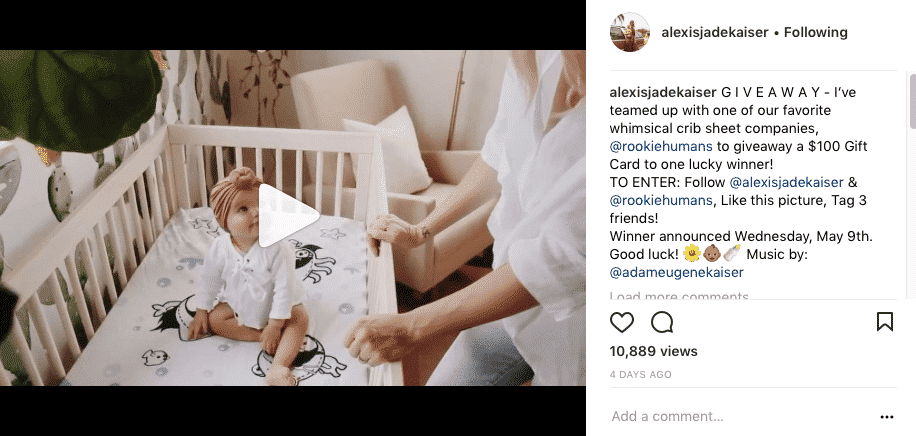
Not only did she draw customers in with an adorable short video of her daughter and the products but she had specific giveaway actions followers needed to follow to enter:
“TO ENTER: Follow @alexisjadekaiser & @rookiehumans
“Like this picture, Tag 3 friends!
“Winner announced Wednesday, May 9th. Good luck!”
This incentivizes followers to like pages which opens them up to see other products and can push new viewers to your site. This is BIG cross-promotional effort brands are doing with influencers and they see great success.
Plus, its a great “you scratch my back and I will scratch yours” tactic! Who doesn’t want new followers and potential customers?
Look to the Little Guys
Believe it or not, micro-influencers are growing more and more popluar as the word authentic gets more and more annoying.
As the influencer tiers evolve with the influx of new individuals, look to diversify your engagement and content with the following influencer tiers:
- Nano-Influencers: 1-10K Followers
- Micro-Influencers – 10-50K Followers
- Mid-Tier Influencers – 50-500K Followers
- Macro-Influencers – 500K-1M Followers
- Mega-Influencers – 1M+ Followers
Influencer marketing is all about creating trust and authenticity between the influencer and their audience, something nano-influencers are able to achieve by nature of their intimate follower numbers. Not to mention, they offer amazing ROI at very little cost in comparison to macro-influencers who can cost you an arm and leg.
Host Some Influencers
Influencers have formulated a stand-alone industry where there is ton of creativity and money to be had so as a business, why not holster free user-generated content by hosting influencers at a branded event?
Smart businesses are becoming more aware of the benefits hosting a ton of influencers can bring! By hosting influencer events, brands can amplify their campaign in big ways! For example, just this past month, H&M and Lodge At Blue Sky hosted influencers in Utah for a #HMLeague retreat where they did photoshoots galore as well as brainstormed content ideas.
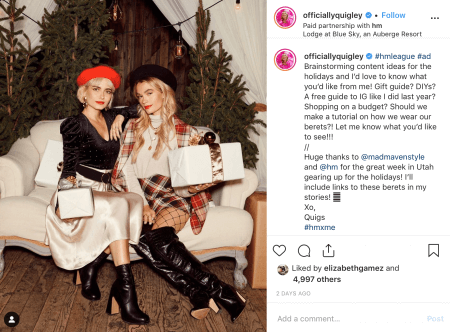
Influencers during the week posted behind the scenes content, shared their final images, toured their hotel accommodations and shared excitement for the upcoming holiday festivities. Not only did H&M and Blue Sky get quality content value from this event, but they also got tons of traffic with people piquing interest!
Like this example, you don’t have to go full scale to make an event like this work! Invite influencers to:
- A Free Product Try On Before Lines Drop
- Give Them Free services
- Co-host an event with other businesses who can help with costs
Whatever the case, there is something to be said about the buzz influencers make!
Ensure ROI
None of this will be worth it if you are not measuring the impact and success of your influencer marketing. Are your influencer marketing campaigns actually profitable and helping you reach your goals?
More importantly, how do you measure that?
While the monetary value is not always direct, you can still track how much revenue you are getting from their posts and actions.
One of the most basic ways to at least get started is to use URL tracking parameters. Assign specific parameters to your influencers so you can track the actions of every visitor they drive to your site.
Other metrics to measure your influencer marketing success are:
- Reach and views
- Likes/Follows
- Clicks and votes
- Brand studies
- Shares and referrals
- Tracking tags
- Comments
- Click to ecommerce pages
- Coupons/Promotional campaigns
The important thing here is to track whatever you can track. Some aspects of influencer marketing can be hard to measure, but a lot of it is very measurable and is something you should follow to make sure that you are getting value from your investment.
Now Under the Influence: Give It a Try!
Influencer marketing has become popular because—when done creatively, strategically and correctly—it works.
Simply paying someone with 50,000 followers to share your post on Instagram won’t help you gain the success you want. By implementing these tips and tricks, you can create more meaningful social interaction with your target audience which can easily convert to sales.
If you want help in implementing an influencer-based ecommerce strategy, please reach out to me in the comments!
What influencer marketing campaigns do you love? What do you look for in an influencer? Comment and share below!





